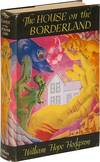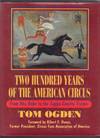
Distant Early Warning Radar Station. Battery operated. With revolving radar scope, blinking warning lights, telegraph key and light blinker.
by (Cold War) [Masudaya] Modern Toys
- Used
- Condition
- See description
- Seller
-
Moray, United Kingdom
Payment Methods Accepted
About This Item
Japan: [Masudaya] Modern Toys, [c. 1960]. Enamelled tin toy, approximately 19.5 x 12 x 14cm. Opaque backlit "scope" with moving airplane silhouette on the interior, red and green lights, red signal key button, and on/off button. With the detachable beacon tower in tin with red light, the plastic radar dish, and the paper with signal key in morse code. The battery compartment accommodates two D batteries. All together in the original card box (20.5 x 14 x 13cm). Price of 39/6' in ink to the box lid. Some scuffs and wear commensurate with use, some loss of the green and red paint from the lightbulbs, occasional tiny spots to the tin, on/off button slightly cracked, morse code card torn at the top where there was originally a string, light wear and some creasing and toning of the box. This toy has been tested and is only partially functional, possibly due to loose connections. Both the red light on the body and the light at the top of the tower are not working, and the interior wheel with airplane silhouettes does not rotate. The "morse code" buzzzer works, as does the green light and the backlight. A very good example. A remarkable relic of the Cold War, this clever, interactive tin toy allowed a child to pretend that they were manning a distant early warning station with a radar "scope" showing the silhouettes of a moving planes, as well as a rotating radar dish and blinking lights, and morse code "signal key" that when inputted made a buzzing sound. It was made by the famed Masudaya firm of Tokyo, which was founded in 1923 and became the leading producer of battery and mechanical-operated toys during the post-war period (fabtintoys.com). This toy has been tested and is only partially functional, with two of the lights and the rotating wheel of plane silhouettes not working at present, possibly due to loose connections. it is nevertheless a lovely example, and rare in the original box with the paper signal key, as here. Though early warning radar systems had been in use since Britain's deployment of Chain Home in 1938, the post-war threat of nuclear bombers led to the development of increasingly sophisticated long-range systems, particularly to monitor activity over the Arctic. The most successful of these was the DEW Line, which was constructed primarily in Canada's far north, with additional stations in Alaska, Greenland, and Iceland. It went on-line in 1957 but quickly became semi-obsolete as the nuclear threat shifted from bombers to ICBMs, though it continued to operate until the early 1990s to provide an early warning of airborne invasion forces that might have proceeded a missile strike by several hours. The militarisation of the Canadian Arctic had significant effects on Canadian politics, and resulted in increased government interference in the lives of the Inuit as well as serious environmental damage. This toy was probably inspired by DEW (it was the only "distant" early warning radar at the time), and it might be a coincidence, but the illustration on the box looks remarkably similar to a 1955 ad in Time magazine extolling Raytheon's role in designing and manufacturing the radar dishes for that undertaking. Though the toy is undated it was probably sold in the late 1950s or early 1960s, given the short period during which distant early warning radar was of military significance. Work at these stations would have involved fairly dull duties, monitoring radar screens for the start of World War III in an isolated and harsh environment, and it's strangely charming that someone chose to produce a colourful toy based on what must have been one of the more demoralising jobs in the Air Force.
Reviews
(Log in or Create an Account first!)
Details
- Bookseller
- Alembic Rare Books
(GB)
- Bookseller's Inventory #
- 832
- Title
- Distant Early Warning Radar Station. Battery operated. With revolving radar scope, blinking warning lights, telegraph key and light blinker.
- Author
- (Cold War) [Masudaya] Modern Toys
- Book Condition
- Used
- Quantity Available
- 1
- Publisher
- [Masudaya] Modern Toys
- Place of Publication
- Japan
- Date Published
- [c. 1960]
- Keywords
- Physics|Nuclear Weapons|Technology|Aviation|Military Technology|Children's Science|Design|Cold War|Antique Object
Terms of Sale
Alembic Rare Books
30 day return guarantee, with full refund including original shipping costs for up to 30 days after delivery if an item arrives misdescribed or damaged.
About the Seller
Alembic Rare Books
Biblio member since 2018
Moray
About Alembic Rare Books
We specialise in rare science books dating from the late Middle Ages to the 20th century, including first editions, signed copies, manuscripts, objects, and ephemera. We have particular expertise in natural history, genetics and evolution, anatomy, nuclear physics and the Manhattan Project, early computing, and women in science. We also carry books related to women's history and literature.
Glossary
Some terminology that may be used in this description includes:
- Cracked
- In reference to a hinge or a book's binding, means that the glue which holds the opposing leaves has allowed them to separate,...








